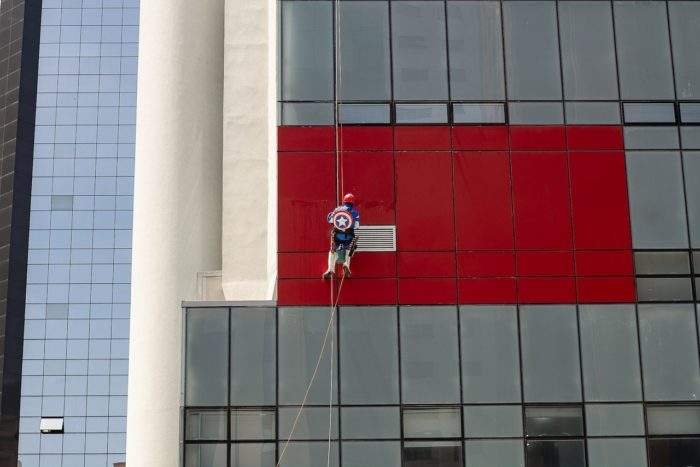Know About Top 4 Factors For High Rise Window Cleaning

Not all cleaning is the same in the high-adrenaline world of high-rise window maintenance. There is, indeed, an industry standard for cleaning high-rise windows. In other words, there is a basic guideline for safe and effective high-rise window cleaning that high-rise window maintenance associates worldwide draw from, both legally and because there are universal methods of this specific conduct. So, follow these tips to avoid risky situations and protect your safety.
1. Costs
When hiring a company to clean your windows, you should know what you are getting into. So how much does high rise window cleaning cost? Double-hung windows, also known as “double-hung sliders,” typically cost $8 to $16 per pane. If you have a storm window that is four panes or more, you’ll likely have to pay around $40 for the entire window. The price will be higher if you need to clean other parts of the structure, like jambs or sills.
In the past, high-rise window washing caused many deaths. Today, however, the risk of a fatality has declined significantly. Nevertheless, safety and proper training are the top priorities when scheduling high-rise services whenever possible. Seasonal change is another factor that affects the need for high-rise window cleaning. Once a year, spring and fall are the most common times for high-rise window cleaning. During this time, the demand for this service increases and decreases.
2. Equipment
High-rise window cleaning requires specialized equipment when working in a high-rise building. These items are attached to the window cleaner, ensuring they do not fall to the ground. In addition, these tools are designed to prevent any injuries or damage to the structure. When you hire a professional high-rise window cleaning company, you can rely on them for the necessary tools and equipment. Professionals are equipped with the right protective tools, knowledge, and experience to operate the equipment safely and efficiently.
A high-rise building requires special safety equipment, including climbing equipment and safety harnesses. A bucket for cleaning solutions is also essential and can be of a unique design. High-rise window cleaning crews also need a glass scraper to remove dirt and grime from the windows. Another essential tool is a T-BAR WAND, which wets windows on high floors. To polish the windows, a squeegee is used to remove the dirty water. Another necessary item is a towel or rag for the final polish. The squeegee is designed to prevent streaks, but the rubber or metal will wear out after prolonged use.
3. Safety Hazards
When working on high-rise windows, it is important to remember that there are many safety hazards to consider. These dangers are minimized with personal protective equipment, proper training, and adherence to relevant legislation. They should also have proper training programs for their staff and demonstrate their compliance with safety standards.
One of the primary risks for high-rise window cleaners is the possibility of falling. The most common danger is falling. Working without edge protection like a guardrail or structural parapet is extremely risky. Other tripping hazards include scaffolding, skylights, and unprotected holes. If working on high-rise buildings, safety measures should be strictly observed.
4. Frequency
If you are in charge of a high-rise building, you probably wonder how frequently your windows should be cleaned. The answer is that the frequency of high-rise window cleaning is determined by various factors, including the location of your building. For example, those in high-traffic areas, near a busy street, and chemical-based industries may require more frequent window cleaning than those in less-busy areas. Similarly, the weather can impact the amount of dirt and pollutants on the windows. It is why high-rise window cleaning is necessary at least once a month or two times a year.
The demand for high-rise window cleaning varies with the season, which affects its frequency. For example, workers may have more difficulty getting to the windows during a heatwave. The weather can also affect safety issues, as wind and extreme heat can hinder their ability to reach windows. Additionally, heat waves can make it dangerous to clean high-rise windows, increasing the risk of heat stroke and dehydration. For these reasons, seasonality can affect how often high-rise window cleaners need to clean windows in different parts of the city.






